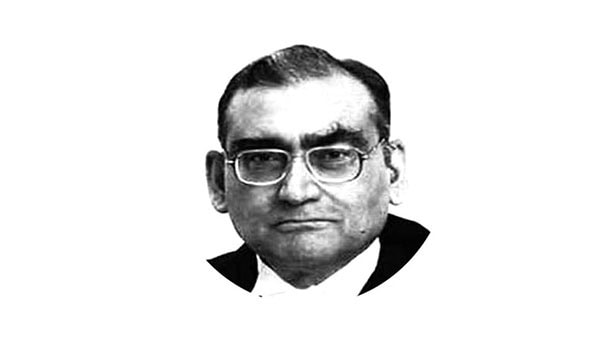Revisiting roe vs wade
A controversy is raging in America over Justice Alito’s leaked draft judgment proposing to overturn the US Supreme Court’s verdict in Roe vs Wade delivered in 1973 regarding the right of abortion.
It is believed four other judges in the court intend to concur with Justice Alito, making it a majority judgment.
I believe Justice Alito’s view is correct, and would like to give my reasons. Of course it is only a draft opinion, but knowing the judicial philosophy of the majority judges it is highly likely it will be confirmed in the final verdict
In Roe vs Wade the US Supreme Court set up a trimester system of pregnancy in women. In the first trimester (the first three months of pregnancy) no restrictions could be placed on a woman to abort.
In the second trimester, too, abortion was permissible, though the state could put some restrictions e.g. it should be done by qualified medical personnel, in licensed clinics, etc.
In the third trimester no abortion was permissible unless a qualified doctor certified that the life of the woman would be in danger without abortion.
In Planned Parenthood vs Casey, 1992, the right to abortion enunciated in Roe was accepted, but the trimester system was replaced by the viability test (ie at what stage of the pregnancy would the foetus be able to survive outside the woman’s womb), and the undue burden test (ie does the restriction on abortion place an undue burden on the pregnant woman e.g. taking the husband’s consent).
I am not going into the questions as to when does life begin, when is a foetus viable, what are undue burdens, etc.
My simple point is that under the separation of powers theory (that each of the three organs of the state have their own spheres of operation and should not encroach into each other’s domains), it is for the legislature, not the judiciary, to make laws, and both Roe vs Wade as well as Planned Parenthood vs Casey made laws.
I am personally in favour of the right to abortion, but then this right should be enacted by the legislature, not created by judges.
There is nothing specific in the US Constitution which gives a right to abortion. Some states in America have enacted this right, but others have not.
The rights of people in the US Constitution are mentioned in the Bill of Rights and several Amendments to the Constitution, e.g. the 14th Amendment, but the right to abortion is nowhere contained therein. Of course there is a theory of ‘unenumerated rights’, i.e. there are some rights which though not expressly mentioned in the Constitution can be said to be part of it, but I do not subscribe to this view.
To accept it would mean that any judge, according to his whim and fancy, can declare anything as an ‘unenumerated right’ and enforce it.
This would lead to chaos. In his book, ‘ The Nature of the Judicial Process ‘ Justice Cardozo of the US Supreme Court observed “ A judge is not a Knight Errant roaming at will in pursuit of his own ideal of beauty and goodness “.
In his dissenting judgment in Griswold vs Connecticut, Justice Hugo Black warned that ‘ unbounded judicial creativity will make this Court a day to day National Convention ‘.
In Lochner vs New York the celebrated Justice Holmes of the US Supreme Court in his dissenting judgment criticised the majority of the court for becoming a super legislature by inventing a ‘liberty of contract’ theory thereby enforcing its particular laissez faire economic philosophy.
The job of a judge is to interpret the law made by the legislature, and apply it to specific cases, but not to make law.
Roe vs Wade (and Planned Parenthood vs Casey) clearly made law, which was the function of the legislature. Hence it should be reversed.
—The writer is former judge, Supreme Court of India.










